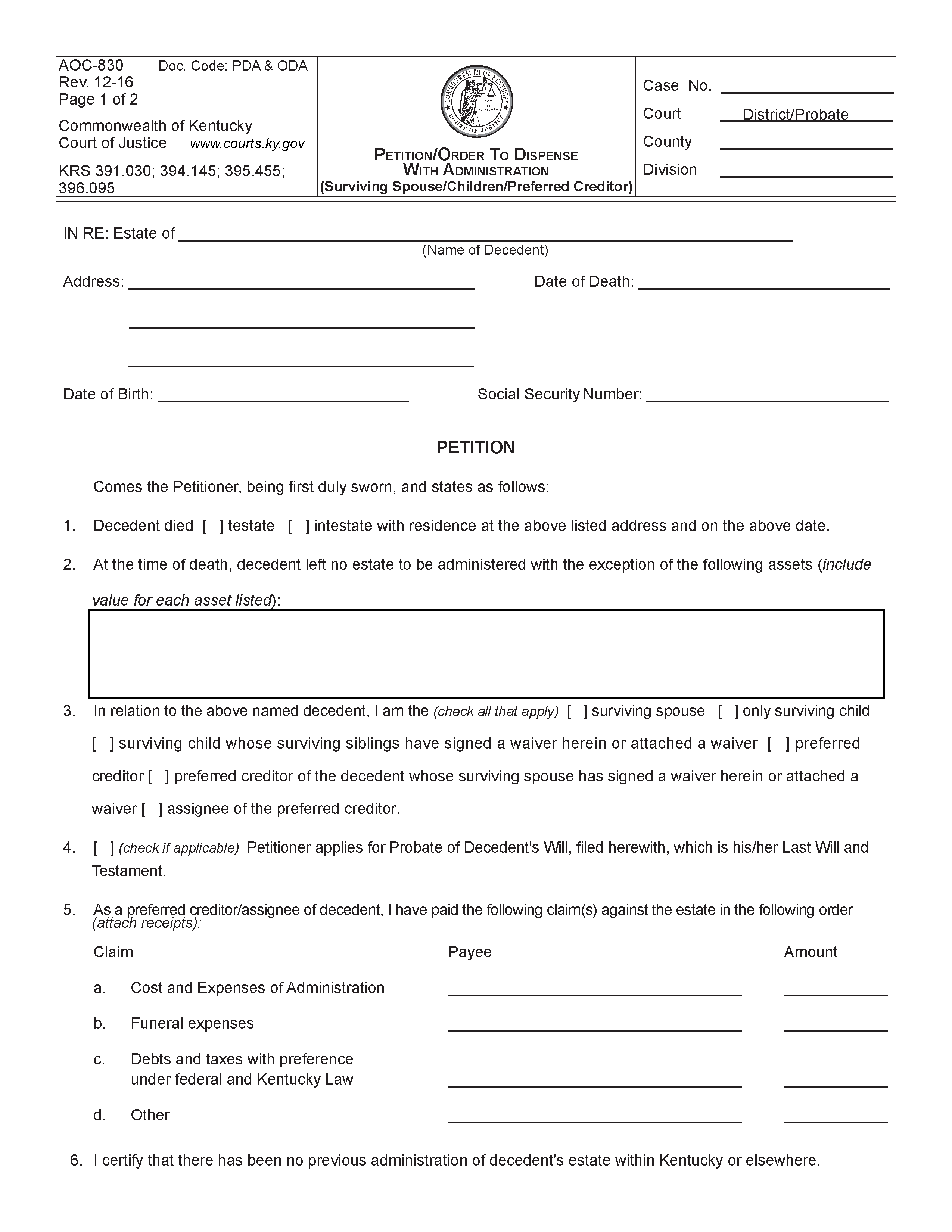Laws
- Statute: Chapter 391 and Chapter 395
- Maximum Estate Value (§§ 391.030(1)(c), (4), and 395.455): $30,000
- Mandatory Waiting Period: Not mentioned in state statutes.
- Where to File: District Court
How to File (3 Steps)
Step 1 – Estate Requirements
To bypass estate administration, the petitioner must first ensure that the below requirements have been fulfilled.
- The estate is valued at $30,000 or less.
- The estate does not include any real property.
- The decedent is survived by their spouse and/or children.
- Administration costs, funeral expenses, and debts have been paid.
- The petitioner is the surviving spouse, surviving child, or preferred creditor of the decedent.
Step 2 – Complete and File Affidavit
The Petition to Dispense with Administration can be completed by the surviving spouse, child, or preferred creditor of the decedent. The document requires the signatures of the surviving spouse and children of the decedent.
The completed petition must be brought to a notary public to be notarized. The notary will need to verify the petitioner’s identity and may require a certified copy of the decedent’s death certificate and a copy of their will.
Once the petition has been completed and notarized, it will need to be filed with the District Court for the county in which the decedent was a resident.
A preferred creditor is an individual who has paid for the decedent’s estate administration, funeral arrangements, debts, taxes, and other expenses deemed admissible by the court.
Step 3 – Distribution of Assets
If the petition is granted, a judge will sign the order (found on the same form). The petitioner will be mailed a certified copy of the order or notification of the petition’s denial. The certified order can be used to collect the decedent’s property and distribute it to the creditors and heirs.

